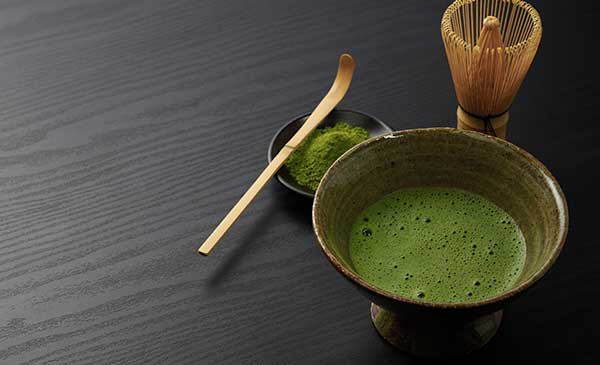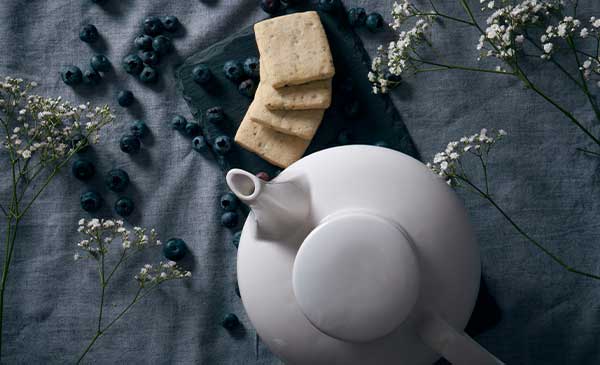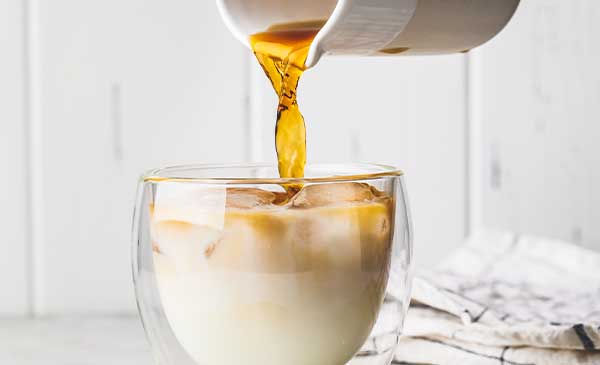Matcha vs Green Tea

What is the Difference Between Matcha and Green Tea?
Matcha, a vibrant and nourishing beverage, has gained popularity among tea enthusiasts. Matcha and green tea are both derived from the same plant, Camellia sinensis. However their different processing methods result in distinct characteristics.
Matcha is made from shade-grown tea leaves, which are carefully cultivated under cover to protect them from direct sunlight. This shading process enhances the flavor and increases the chlorophyll content in the leaves, giving matcha its bright green color. Following the harvest, the leaves undergo steaming, drying, and grinding with traditional stone mills to form a fine powder.
On the other hand, regular green tea is made by steeping whole green tea leaves in hot water. The leaves are discarded instead of ingested. This method allows for a milder flavor compared to matcha.

Is Matcha Healthier than Green Tea?
In terms of health benefits, matcha is often considered superior to green tea. Since matcha is consumed in its powdered form, you ingest the entire green tea leaf. This provides a higher concentration of powerful antioxidants and nutrients.
Both Matcha and regular green tea are rich in compounds known as catechins, renowned for their ability to combat cancer. They also provide vitamins and minerals like vitamin C, potassium, and iron. Green tea, although still beneficial, contains a lower concentration of these compounds due to the brewing process.
What Does Matcha Taste Like?
Now, let's address the question on everyone's mind - does matcha taste like grass? While it is true that matcha has a distinct earthy flavor, it is not comparable to the taste of grass. Matcha has a rich and umami flavor profile, with hints of sweetness and a slight vegetal undertone. Its unique taste is often described as smooth and creamy, making it a delightful beverage to savor.
If it is too earthy for your tastebuds, try starting with a flavored matcha such as blueberry matcha, vanilla matcha, or sweet green matcha.

Ceremonial vs Culinary Matcha
There are different grades of matcha available on the market: Ceremonial, Barista, and Culinary. Ceremonial grade matcha is considered the top tier and is often utilized in traditional matcha tea ceremonies. It has a smooth, delicate flavor and a vibrant green color.
Culinary grade matcha, on the other hand, is more affordable and is commonly used in cooking and baking. It has a slightly stronger flavor and is often mixed with other ingredients.
Barista grade matcha is in between ceremonial and culinary matcha and is typically used in cafés to make matcha lattes.
What is the Best Water Temperature for Matcha?
Another factor that affects the taste of matcha is the brewing water temperature. Unlike traditional green tea, matcha is prepared by whisking the powdered leaves directly into hot water. For best results, this is done with a bamboo whisk in a traditional matcha bowl.
For making matcha, we recommend using water heated to around 175°F (80°C). Using water that is too hot can make the matcha taste bitter. While very cold water may not fully dissolve the powder, making it feel grainy.
The amount of matcha to use depends on personal preference and the desired strength of the tea. A general guideline is to use 1 teaspoon of matcha powder for every 8 ounces of water.
However, feel free to adjust the amount to suit your taste. If you prefer a stronger flavor, add more matcha. If you prefer a milder taste, you can use less.
Using the proper tools makes every job easier. Use a matcha bowl that is the perfect depth and size to accommodate the bamboo whisk. Make sure your whisk dries properly and is in good condition for your next cup of matcha by storing it on a whisk holder.
How much Caffeine is in Matcha?
Matcha does contain more caffeine than green tea. When you consume matcha, you are ingesting the whole leaf, resulting in a more concentrated caffeine boost. However, the amount of caffeine can vary depending on factors such as the quality of the tea and the amount of green tea powder used.

Matcha vs Coffee
If you are a coffee drinker, you may wonder whether matcha can be a substitute for a cup of coffee. While matcha does contain caffeine, its effects are different from those of coffee. Matcha provides a more sustained energy boost without the jitters or crash that can come with drinking coffee. Additionally, matcha contains an amino acid called L-theanine, which promotes a sense of calm and relaxation.
Inquiring Minds Want to Know: Does Matcha Make You Poop?
Everyone's digestive system is different. The caffeine and chlorophyll in matcha can stimulate bowel movements in some individuals, but it is not a significant enough side effect to be considered a primary reason for consuming matcha.
Why is Matcha More Expensive than Regular Green Tea?
One of the reasons why matcha is often pricier than green tea is the meticulous cultivation and production process. Matcha requires shade-grown tea plants, which are carefully tended to for weeks before harvest. The process of shading amplifies the taste and boosts the chlorophyll level, imparting matcha with its bright green hue. Additionally, the labor-intensive method of grinding the leaves into a fine powder contributes to its higher cost.
How to Store Matcha
As with any tea, proper storage is essential to maintain the freshness and quality of matcha. To keep matcha at its best, it is recommended to store it in an airtight container in a cool and dark place, away from direct sunlight and moisture. Matcha is sensitive to heat, light, and air, so ensuring proper storage conditions will help preserve its vibrant color and flavor for a longer period.
In conclusion, matcha and green tea have their own unique qualities. Matcha offers a more concentrated dose of antioxidants and nutrients, while green tea provides a milder flavor and a moderate caffeine boost. Although matcha may be more expensive, its production process and health benefits make it a worthwhile choice for tea enthusiasts seeking a vibrant and nourishing beverage.






